Column Footing Design Project - Civil Engineering, 2024
VerifiedAdded on 2022/11/16
|5
|622
|103
Project
AI Summary
This assignment details the design of a column footing for a structure, including calculations and considerations for soil bearing capacity, axial forces, and construction methods. The project involves designing a column footing to support four steel columns, with specifications for concrete and steel grades, along with the calculation of the required footing dimensions. The design process includes determining the total axial force, soil reaction, and required footing area. The assignment also discusses construction tasks, such as excavation, formwork, and curing, as well as cost estimation and the importance of maintaining a detailed design record. Furthermore, it emphasizes the significance of understanding the environmental and heritage impacts of construction materials like steel and concrete, as well as the importance of risk assessment and management during construction. The project highlights the integration of geotechnical data and engineering surveys in the design process.
1 out of 5
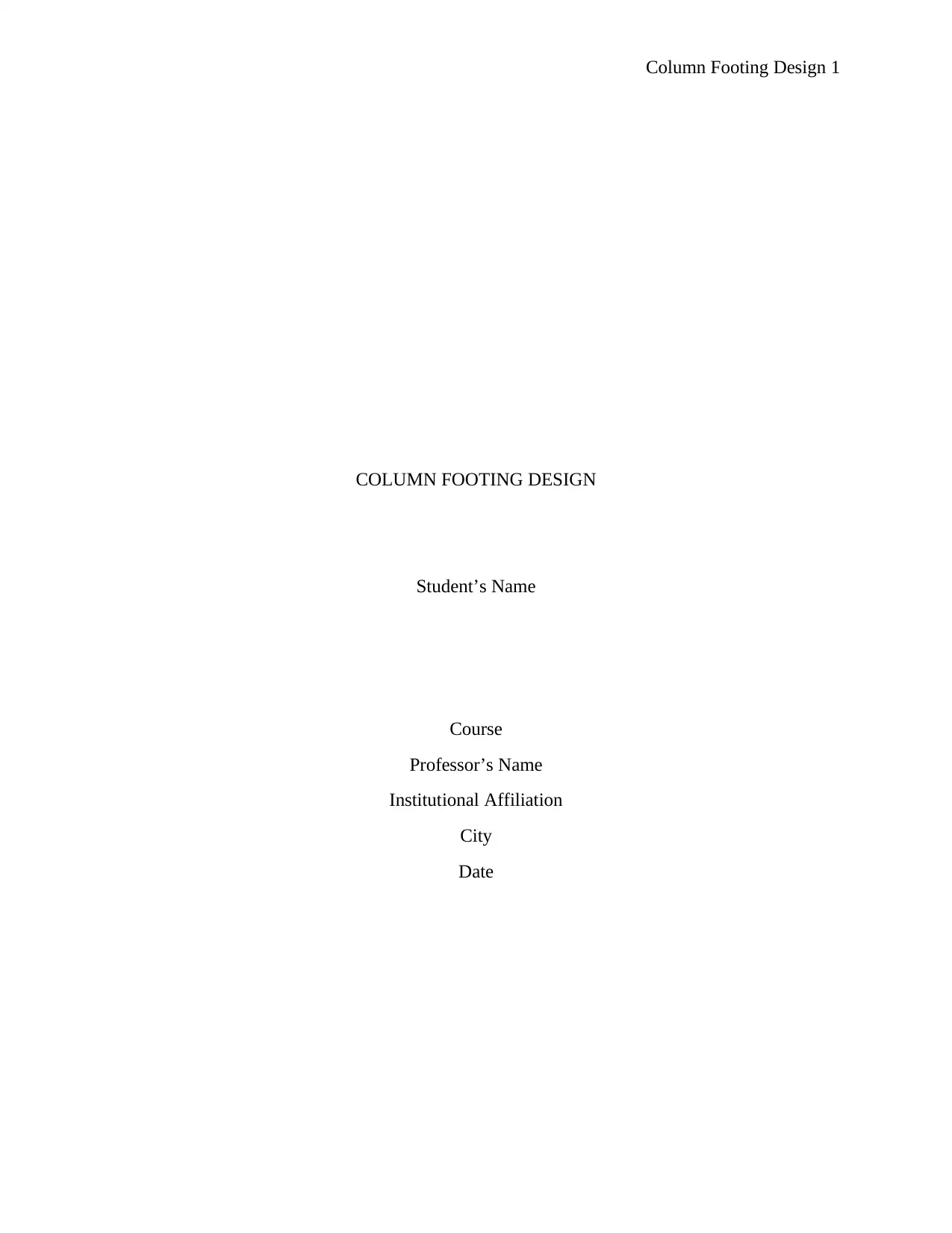
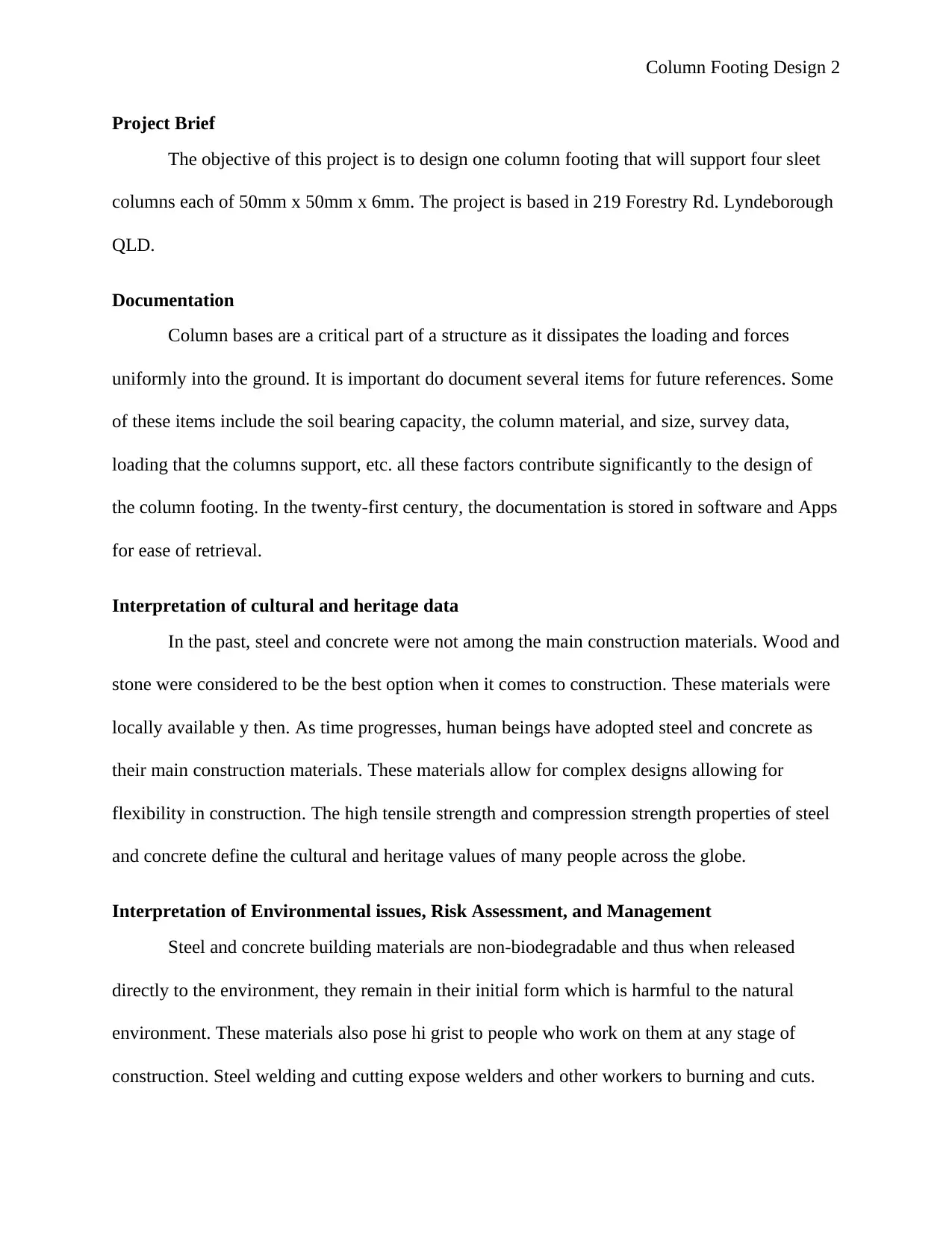
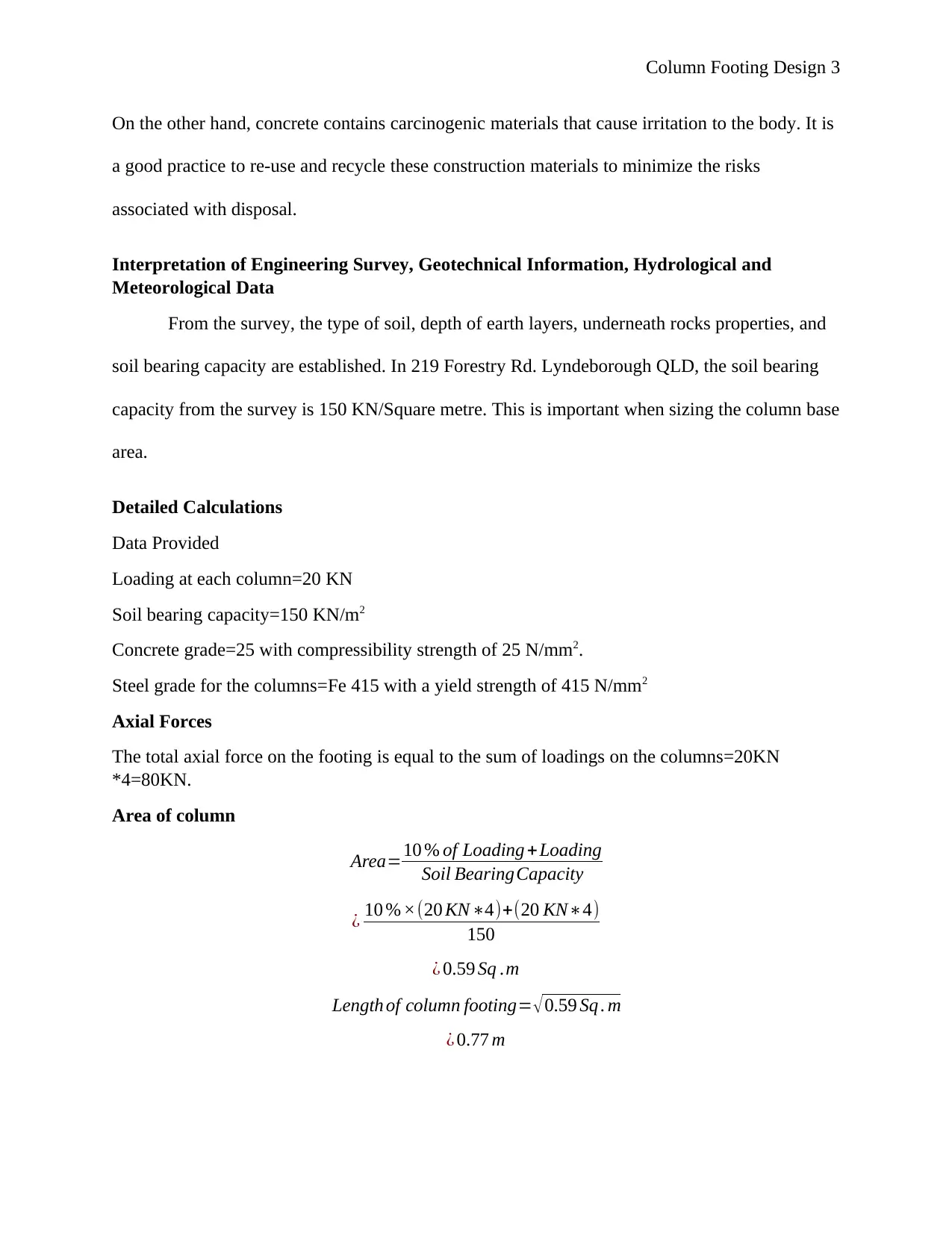

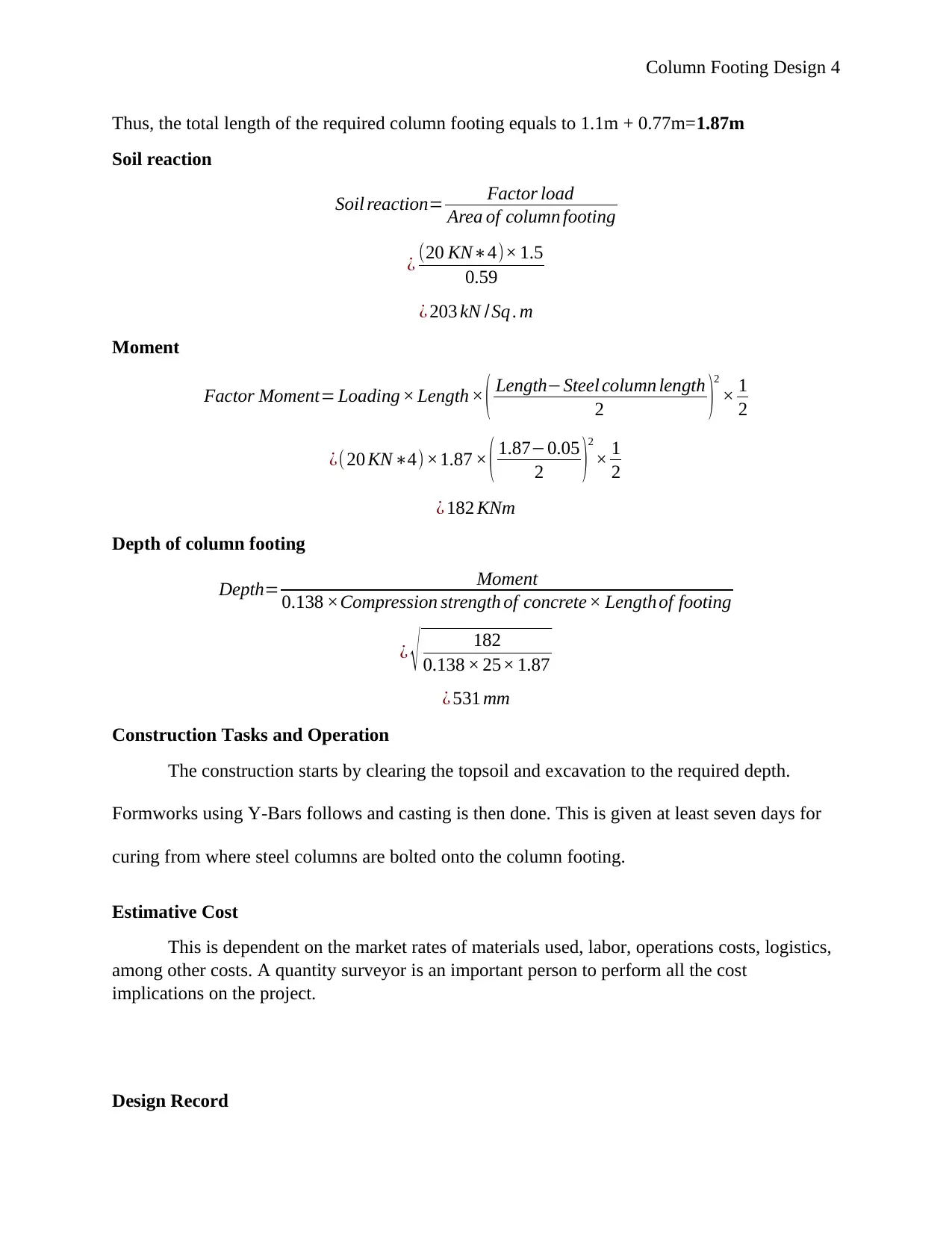
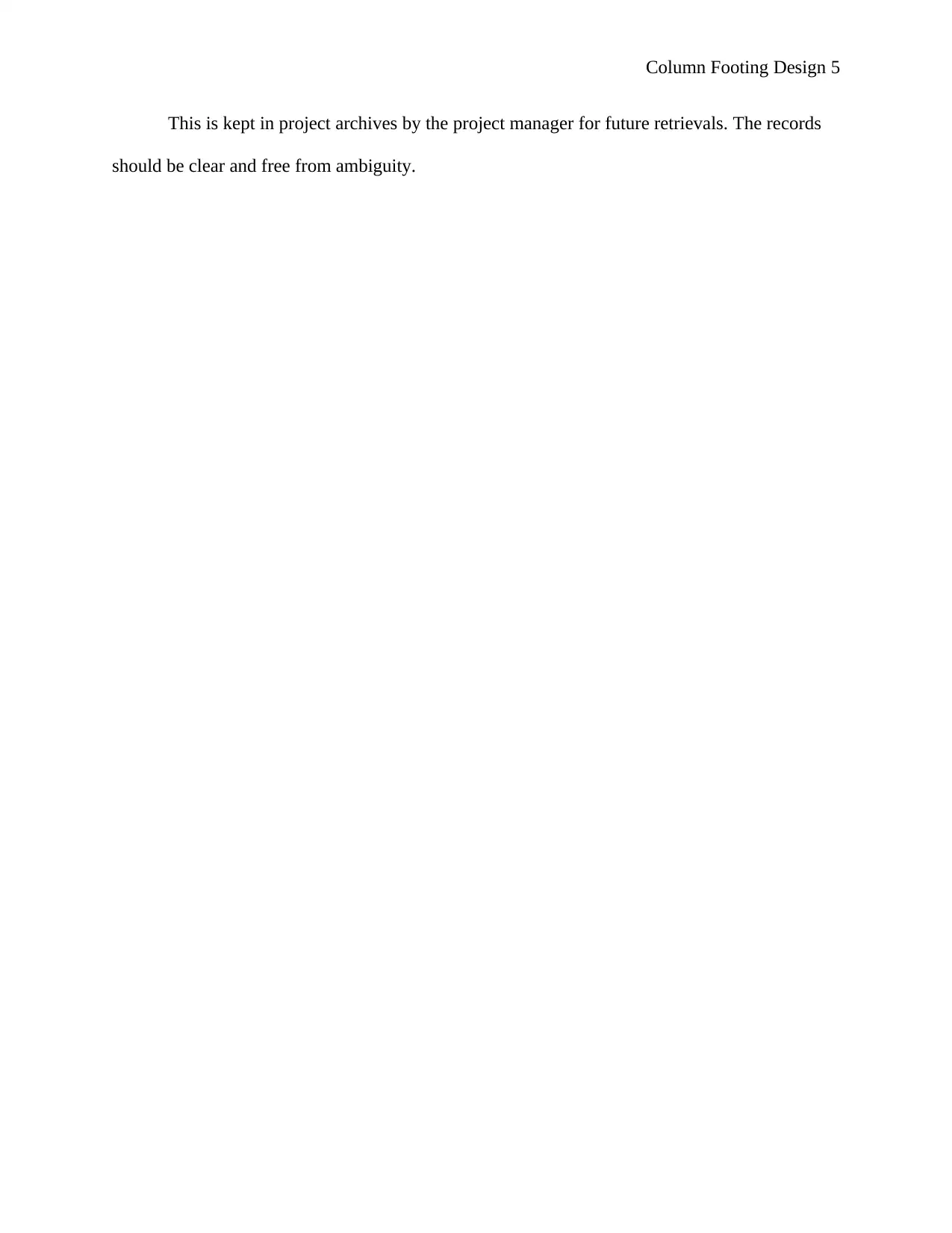






![[object Object]](/_next/static/media/star-bottom.7253800d.svg)